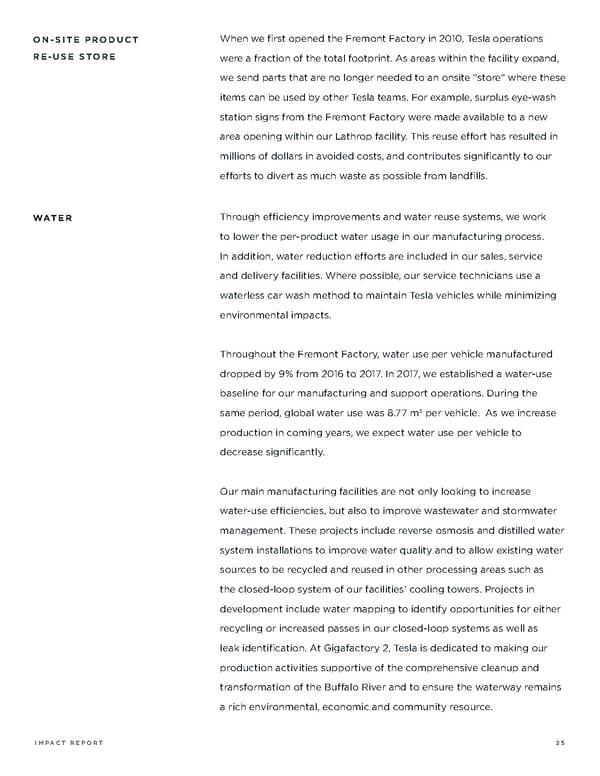ON-SITE PRODUCT When we first opened the Fremont Factory in 2010, Tesla operations RE-USE STORE were a fraction of the total footprint. As areas within the facility expand, we send parts that are no longer needed to an onsite “store” where these items can be used by other Tesla teams. For example, surplus eye-wash station signs from the Fremont Factory were made available to a new area opening within our Lathrop facility. This reuse e!ort has resulted in millions of dollars in avoided costs, and contributes significantly to our e!orts to divert as much waste as possible from landfills. WATER Through efficiency improvements and water reuse systems, we work to lower the per-product water usage in our manufacturing process. In addition, water reduction e!orts are included in our sales, service and delivery facilities. Where possible, our service technicians use a waterless car wash method to maintain Tesla vehicles while minimizing environmental impacts. Throughout the Fremont Factory, water use per vehicle manufactured dropped by 9% from 2016 to 2017. In 2017, we established a water-use baseline for our manufacturing and support operations. During the 3 same period, global water use was 8.77 m per vehicle. As we increase production in coming years, we expect water use per vehicle to decrease significantly. Our main manufacturing facilities are not only looking to increase water-use efficiencies, but also to improve wastewater and stormwater management. These projects include reverse osmosis and distilled water system installations to improve water quality and to allow existing water sources to be recycled and reused in other processing areas such as the closed-loop system of our facilities’ cooling towers. Projects in development include water mapping to identify opportunities for either recycling or increased passes in our closed-loop systems as well as leak identification. At Gigafactory 2, Tesla is dedicated to making our production activities supportive of the comprehensive cleanup and transformation of the Bu!alo River and to ensure the waterway remains a rich environmental, economic and community resource. IMPACT REPORT 25
 Tesla Impact Report | 2019 Page 24 Page 26
Tesla Impact Report | 2019 Page 24 Page 26